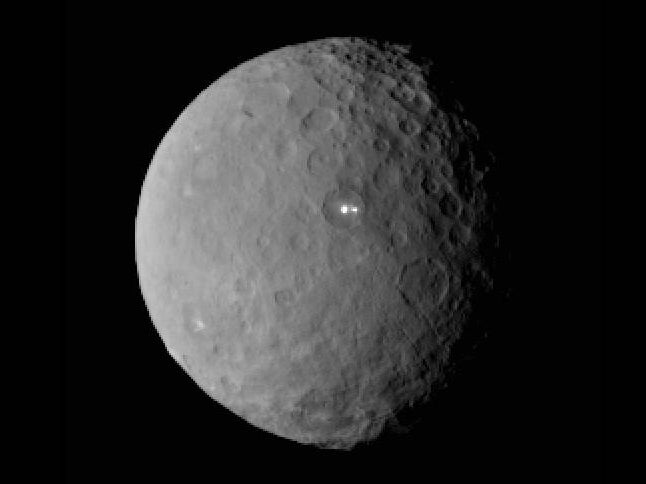Nasa asks for the public's help to identify mysterious bright spots on Ceres
The pictures show the clearest image yet of the unusual lights on the surface of dwarf planet Ceres

Nasa scientists have asked the public what the bright spots on the surface of dwarf planet Ceres could be, being no closer to the answer despite the Dawn probe taking the most clear and detailed pictures of the planet ever.
The Dawn space probe, which was launched in September 2007, took the pictures of Ceres that show the bright spot from almost 29,000 miles away. The probe is getting closer to being pulled into orbit around the dwarf planet.
The pictures show two clear bright spots on the surface of the planet, which is around 590 miles in diameter and made up of rock and ice.
Bright spots had been seen on the surface of the planet earlier, but only after the Dawn probe took detailed images, could Nasa scientists see that there were many bright spots close to each other.
Andreas Nathues, lead investigator for the framing camera team at the Max Planck Institute for Solar System Research in Gottingen, Germany, said: "The brightest spot continues to be too small to resolve with out camera, but despire its size it is bright that anything else on Ceres."
"This is truly unexpected and still a mystery to us."
Chris Russell, the principal investigator for the Dawn mission, said: "Ceres' bright spot can now be seen to have a companion of lesser brightness, but apparently in the same basin. This may be pointing to a volcano-like origin of the spots, but we will have to wait for better resolution before we can make such geologic interpretations."
Nasa has now let the public give their ideas on what the spot could be, launching an online poll on its website.
Nasa theorises that the light is due to a reflection of sunlight hitting the surface of the planet, but are unsure what material causes the reflection.
30 per cent of respondents think it is ice, but the winning choice is 'other', with 38 per cent - do they think it could be alien life?
Dawn previously visited the giant asteroid Vesta from 2011 to 2012, taking tens of thousands of images, and many more measurements, of the body.
It is currently studying Ceres, the dwarf planet that is one of the largest bodies in the asteroid belt between Mars and Jupiter.
Subscribe to Independent Premium to bookmark this article
Want to bookmark your favourite articles and stories to read or reference later? Start your Independent Premium subscription today.

Join our commenting forum
Join thought-provoking conversations, follow other Independent readers and see their replies